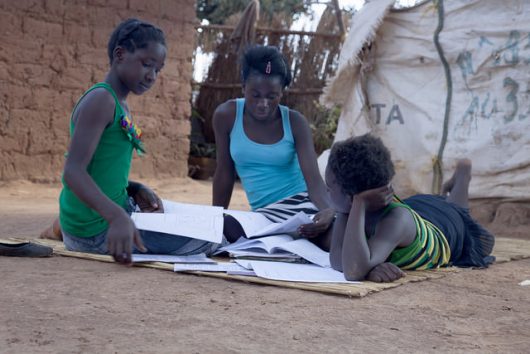Step By Step: Initiatives Bettering Girls’ Education in Botswana

Botswana, a country in southern Africa, has reached a stable, democratic government with strength in its economic policies and education system. Primary net enrollment rate is about 85 percent with participation between girls and boys averaging an almost equal number.
However, there are still many barriers to girls education such as sexual violence, orphan and child-headed household, social-cultural issues and early pregnancies. Many initiatives and programs, such as those shown below, are motivated to improve learning outcomes and provide a gender-sensitive environment that will encourage girls to stay in school.
Free Sanitary Pads as School Supplies
One in 10 girls in sub-Saharan Africa misses schools during their period. Others lose 20 percent of their education which makes them more likely to drop out of school. oftentimes, poor academic performance can be attributed to girls missing school when on their monthly menstrual period.
Botswana’s parliament is improving girls’ education in Botswana through a motion on August 2017 that offers girls in both private and public schools sanitary pads. This will allow the girls who cannot afford their own sanitary pads to continue their education during menstrual periods. It is the first country in Africa and the second country in the world to offer free sanitary products to young women.
Women in STEM
Up to 40 percent of all orphans in Botswana are 12-17 years old. Many children become caregivers, especially girls, and are forced to have adult responsibilities. As a result, inadequate health care, lack of protection from sexual assault and decreased education all increase.
Stepping Stones International (SSI) is an after-school and community outreach program that serves orphaned and vulnerable adolescents and their caregivers.
SSI is improving girls’ education in Botswana through the implementation of a year-long, day after-school program that includes STEM activities that empower girls to obtain critical thinking skills. The program also hopes to each girls to understand the impact of engineering in a global context. Through aiding youth in developing design process skills and using them in various engineering challenges, the organization helps address the gap in girls’ education and teaches youth how to apply STEM tools to real-life situations.
Educating Girls on HIV Risks
At 24 percent, Botswana has the third-highest HIV prevalence worldwide among adults. It’s estimated that more than 40 percent of those with HIV are from older males that offer girls gifts and money in exchange for sexual relationships. For each year older a male partner is than the female, the risk of unprotected sex increases by 28 percent.
Young 1ove is a non-governmental organization based in Botswana that scales evidence-based programs in health and education. The group is improving girls’ education in Botswana through its program, “No Sugar,” which teaches girls about the likelihood of attracting HIV from older men.
The course has reaches more that 350,000 students in 350 schools across the country. A study conducted by the organization on pregnancy rates — another risk of unprotected sex — revealed that in schools that taught the course, pregnancy dropped 30 to 40 percent.
Benefits of Girls’ Education in Botswana
An educated girl is healthier, married later, has healthier children and reinvests in her family and community. Botswana is committed to overcoming the barriers that hinder girls access to education.
The long-term goal of aiding organizations and initiatives is to see an increase in the number of girls who complete secondary school and go on to attend college or begin a career.
– Anne-Marie Maher
Photo: Flickr
